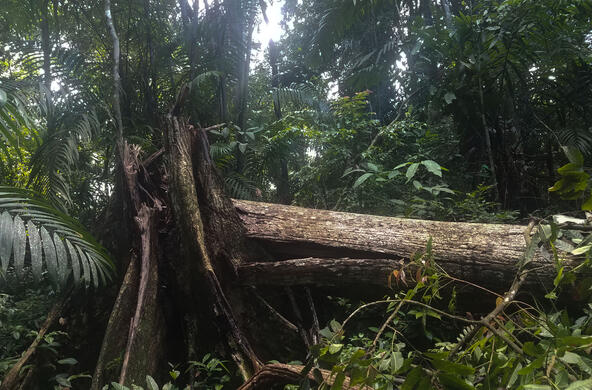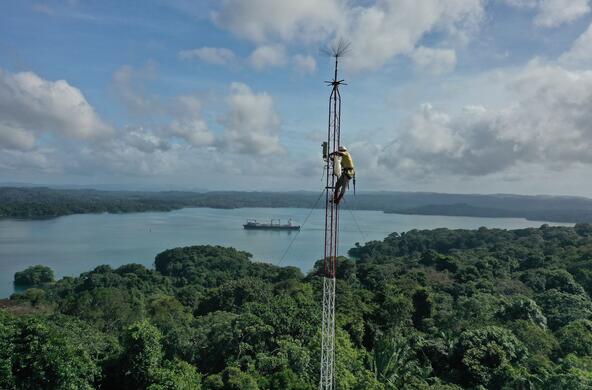There is no factoid that doubters of human-induced climate change like to throw around more than the idea that the ice in Antarctica is not melting, perhaps even expanding. I’ve heard it stated emphatically at a hearing in the North Carolina legislature,[1] and I’ve seen it in The Wall Street Journal.[2]
Trouble is: it just ain’t so.
Summer is winding down in Antarctica. The penguins have finished nesting and now head out to sea for the winter. Soon the continent will bask in 24 hours of darkness for the next six months. The end of summer is a good time to assess the status of the Antarctic ice pack. How much remains this year?
First we must remember the difference between sea ice and ground ice. Sea ice is frozen from sea water and floats on the surface of the ocean waters around Antarctica. It forms and melts every year and hasn’t shown much change in recent years. Ground ice is the ice that forms on land. It forms from snowfall, which hardens to form glacial ice. Some of it melts or moves to the sea in glaciers each year. You can tell the difference between a piece of sea ice and a piece of ground ice by its salt content. Forming from snowfall, ground ice contains very little sodium chloride.
If you visit Antarctica, you’ll see a lot of ice melting. This should not cause immediate worry; much of it will reform during the winter. What really matters is the net, long-term trend in the amount of ice on the Antarctic continent, and the end of summer is a good time to look.
We’ve known for about 10 years from a variety of studies that the ice pack on Antarctica is getting smaller. Now, a new study by Alba Martin-Español and a team of coworkers uses a variety of methods to estimate the total mass loss of 84 billion metric tons per year in the past decade. The greatest loss is seen in the Antarctic Peninsula (28 billion metric tons annually). The West Antarctic ice sheet is also thinning. These losses are partially balanced by a gain of ice in East Antarctica. The net balance for the Antarctic continent is negative and consistent with independent observations that show lower salinity in the Ross Sea from melting ground ice. The loss of ice on Antarctica is also consistent with the rise in sea-level seen globally.
Some of the ice sheets lost in Antarctica have been stable for up to 10,000 years; their loss is indicative of a new set of conditions, likely due to human activity. The overall loss of ice from Antarctica portends long-term changes at the South Pole. Should the West Antarctic ice sheet collapse, we would see sea levels rise 5 meters (~15 feet) globally. Along with the rapid melting of ice on Greenland, that’s enough to cause serious havoc in Miami and Houston, yet U.S. Senators from both Florida and Texas have expressed doubt about the reality of human-induced climate change.
When some folks don’t like the science, they substitute belief. Let’s hope voters know the difference.
References
Cavalieri, D.J. and C.L. Parkinson. 2008. Antarctic sea ice variability and trends. Journal of Geophysical Research—Oceans 113: 1979-2006.
Jacobs, S.S., C.F. Giulivi, and P.A. Mele. 2002. Freshening of the Ross Sea during the late 20th century. Science 297: 386-389.
Martin-Español, M. et al. 2016. Spatial and temporal Antarctic ice sheet mass trends, glacio-isostatic adjustment and surface processes from a joint inversion of satellite altimeter, gravity and GPS data. Journal of Geophysical Research—Earth Surface 120: doi: 10.1002/2015JF003550
Rietbroeck, R. et al. 2016. Revisiting the contemporary sea-level budget on global and regional scales. Proceedings of the National Academy of Sciences doi: 10.1073/pnas.1519133113
Rignot, E., I. Velicogna, M.R. van den Broeke, A. Monaghan and J. Lenaerts. 2011. Acceleration of the contribution of the Greenland and Antarctic ice sheets to sea level rise. Geophysical Research Letters 38:
Shepherd, A., et al. 2012. A reconciled estimate of ice-sheet mass balance. Science 338: 1183-1189.
Zwally, H.J. and B.M. Glovinetto. 2011. Overview and assement of Antarctic ice-sheet mass balance estimates, 1992-2009. Surveys in Geophysics 32: 351-376.
Zwally, H. J., J. Li, J.W. Robbins, J.L. Saba, D. Yi, A.C. Brenner, 2015. Mass gains of the Antarctic ice sheet exceed losses. Journal of Glaciology doi:10.3189/2015JoG15.Jo71
[1] Legislative Commission on Global Climate Change, North Carolina General Assembly, 3 February 2006
[2] Matt Ridley and Benny Peiser. 2015. Your complete guide to the climate debate. The Wall Street Journal, November 27. These writers refer to a recent publication by Zwally et al. (2015), which is based on data from 1992 to 2001. The paper seems “cherry-picked” to justify Ridley’s well-known skepticism about global warming. Meanwhile, a variety of recent and longer term analyses with better instrumentation show significant losses, not gains, of ice mass from Antarctica, including an earlier analysis by Zwally and Glovinetto. 2011







